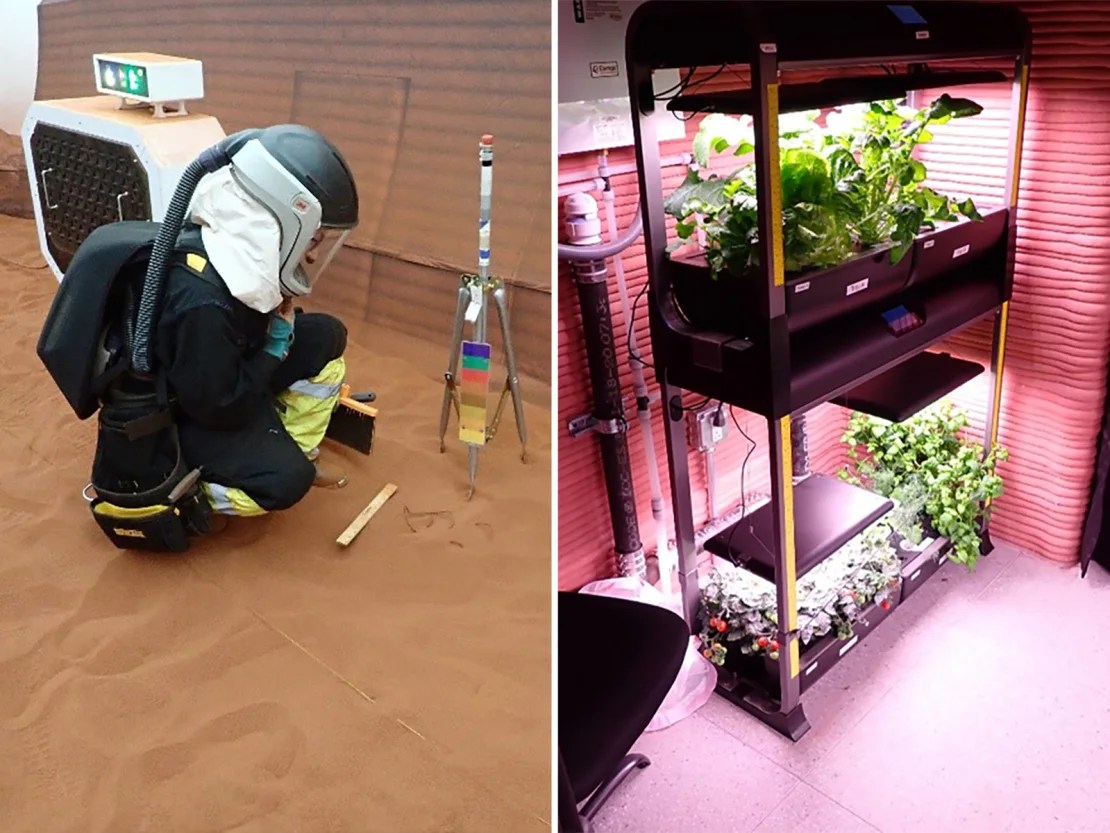NASA is looking for volunteers to live in its Mars simulator: what is required?

(CNN) — For anyone who has ever dreamed of living on Mars, NASA is looking for potential “Martians” to simulate a mission to the Red Planet.
The space agency launched a call for volunteers for its second Chapea (Crew Health and Performance Exploration Analog) mission, which will launch in spring 2025.
For one year, a four-person volunteer team will live and work inside Mars’ Dune Alpha at NASA’s Johnson Space Center in Houston. The 157-square-meter 3D-printed habitat mimics the living conditions of an astronaut crew that will land on the Martian surface in the future.
Understanding how the crew reacts to the challenges of a deep space mission is essential to planning how astronauts will explore the Red Planet.
Inside Mars Dune Alpha, participants will farm, maintain their habitat, exercise, perform robotic operations and conduct simulated spacewalks. And they will face real problems, such as equipment failure, communication delays, environmental stress, and limited resources.
According to the agency, the application process is now open and will close on April 2.
NASA criteria for crew selection
The Chapea program seeks healthy, non-smoking US citizens between the ages of 30 and 55 who are fluent in English.
According to the agency, “Applicants must have a strong desire to experience unique and rewarding adventures and be interested in contributing to NASA’s work to prepare for the first human journey to Mars.”
When selecting the Chapea crew, the agency has specific criteria in mind that fit the way they select astronauts.
Simulated Mars crew members need a master’s degree in a STEM field, such as engineering, mathematics or life sciences, computing or physics, or a related requirement such as a medical degree, and must be able to pass an astronaut physics exam. They also need two years of professional experience in their chosen field or at least 1,000 hours of piloting in command of jet aircraft.
The duration of the selection process can be extended up to 13 months, and the finalists must undergo medical, psychological and psychiatric tests to ensure that they are mentally and physically fit for such a long and isolated mission.

Inside the habitat, the Chapia 1 crew performs a “marswalk” (left) and uses a system with proper lighting, water and nutrients to grow plants indoors. (Credit: NASA)
And be sure to read the fine print: food allergies or certain medications may be grounds for ineligibility. During the selection process, candidates can find out how they will be compensated for their time if they are selected.
The first Chapea mission, launched on June 25, 2023, will end on July 6. The main objectives of the first mission were to observe and evaluate the health and performance of the crew while living in confined space and facing the expected challenges of life on Mars.
The crew consisted of research scientist Kelly Heston, structural engineer Ross Brockwell, emergency physician Nathan Jones and microbiologist Enka Selariu.
During their time at the retreat, the crew harvested their first crops of leafy greens, peppers and tomatoes using an indoor gardening system. The team also took numerous simulated “Martian walks” in a 1,200-square-foot red sandbox, designed to mimic what it would be like to walk on the surface of Mars. In addition, the crew continues to conduct biological and physical experiments and research.

The Chapea 1 mission crew, Nathan Jones, Ross Brockwell, Kelly Heston and Enka Selariu (left to right), pictured before entering the habitat on June 26, 2023. (Credit: Josh Valcarcel/NASA)
Lessons learned from the first Chapea mission will help NASA fill knowledge gaps about how to ensure Martian crews living millions of kilometers from Earth are healthy and have adequate supplies and support. A total of three Chapea missions are planned, and all have similar objectives.
“The second mission will be similar to the first and will have similar objectives to collect additional data from all participants,” explained Anna Schneider, public affairs officer at Johnson Space Center.




:quality(85)/cloudfront-us-east-1.images.arcpublishing.com/infobae/LCZPSH4RVFC2ZCVN6FV27VXOVA.jpeg)
:quality(85)/cloudfront-us-east-1.images.arcpublishing.com/infobae/MQ4THZVWQQQ42X6NTP53IBYIUE.jpg)